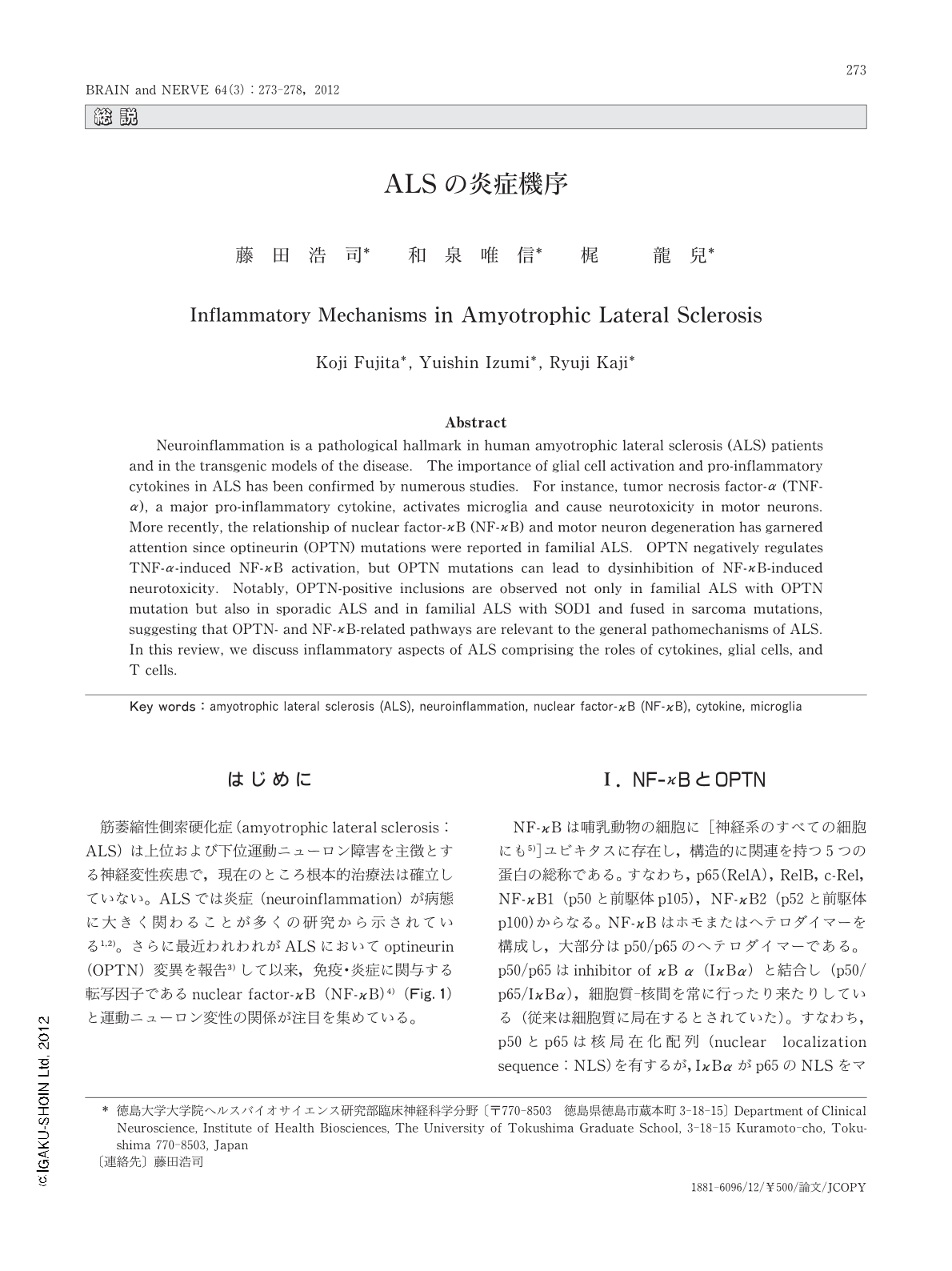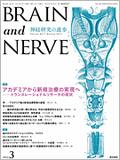Japanese
English
- 有料閲覧
- Abstract 文献概要
- 1ページ目 Look Inside
- 参考文献 Reference
はじめに
筋萎縮性側索硬化症(amyotrophic lateral sclerosis:ALS)は上位および下位運動ニューロン障害を主徴とする神経変性疾患で,現在のところ根本的治療法は確立していない。ALSでは炎症(neuroinflammation)が病態に大きく関わることが多くの研究から示されている1,2)。さらに最近われわれがALSにおいてoptineurin(OPTN)変異を報告3)して以来,免疫・炎症に関与する転写因子であるnuclear factor-κB(NF-κB)4)(Fig.1)と運動ニューロン変性の関係が注目を集めている。
Abstract
Neuroinflammation is a pathological hallmark in human amyotrophic lateral sclerosis (ALS) patients and in the transgenic models of the disease. The importance of glial cell activation and pro-inflammatory cytokines in ALS has been confirmed by numerous studies. For instance,tumor necrosis factor-α (TNF-α),a major pro-inflammatory cytokine,activates microglia and cause neurotoxicity in motor neurons. More recently,the relationship of nuclear factor-κB (NF-κB) and motor neuron degeneration has garnered attention since optineurin (OPTN) mutations were reported in familial ALS. OPTN negatively regulates TNF-α-induced NF-κB activation,but OPTN mutations can lead to dysinhibition of NF-κB-induced neurotoxicity. Notably,OPTN-positive inclusions are observed not only in familial ALS with OPTN mutation but also in sporadic ALS and in familial ALS with SOD1 and fused in sarcoma mutations,suggesting that OPTN- and NF-κB-related pathways are relevant to the general pathomechanisms of ALS. In this review,we discuss inflammatory aspects of ALS comprising the roles of cytokines,glial cells,and T cells.

Copyright © 2012, Igaku-Shoin Ltd. All rights reserved.


